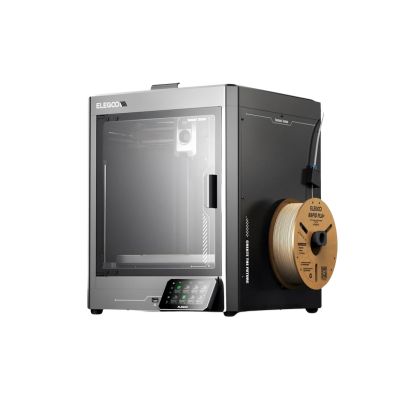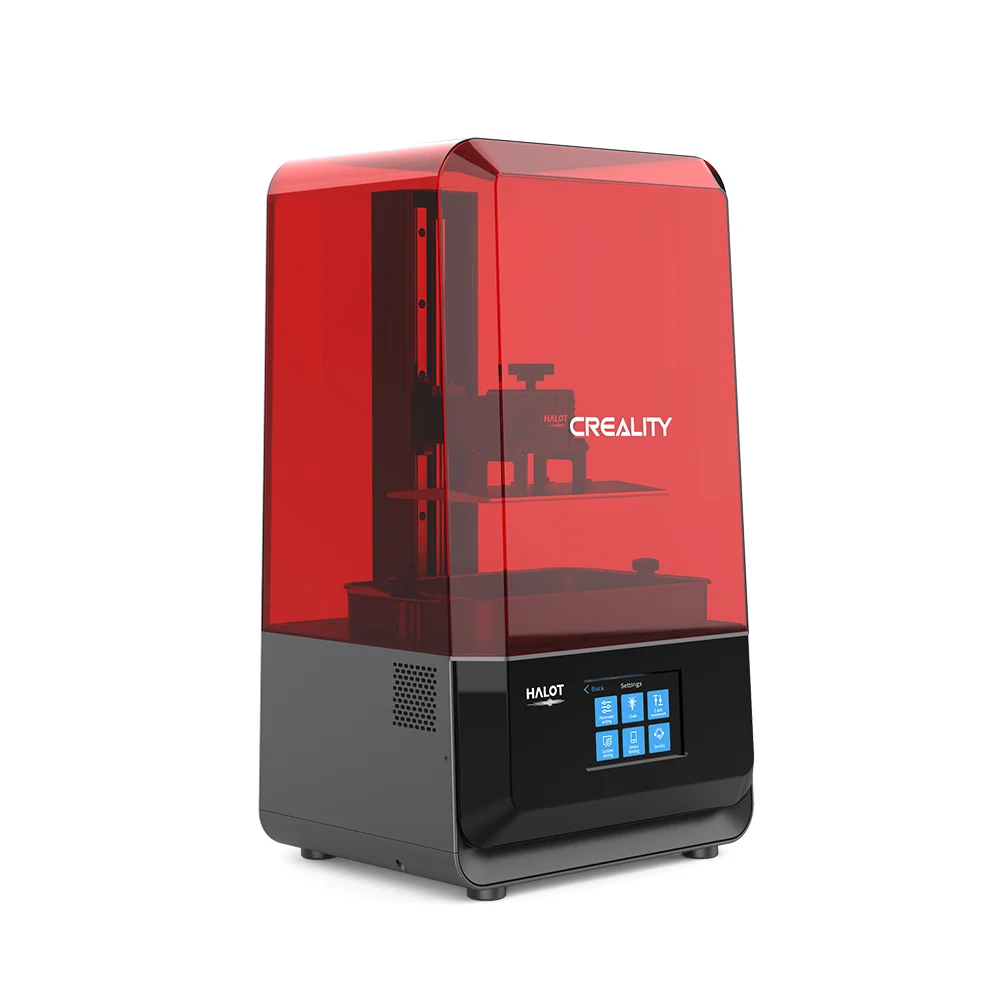Compare Centauri Carbon vs Halot Lite
Comparison between the best 3D printers
Choose the best 3D printer at the best price. The cheapest 3D printers are here.
Buy a 3D printer here with 3D Fila.
 |
 |
|
| Model | Centauri Carbon |
Halot Lite |
| Printing Material | Filament | Resin |
| Buy Filament for Elegoo Centauri Carbon | Buy Resin forCreality 3D Halot Lite | |
| Estimated price | $500,00 | $400,00 |
| Manufacturer | Elegoo | Creality 3D |
| Release Year | 2025 | 2021 |
| Print Volume [mm] | 256x256x256 | 192x120x200 |
| Printer Size [mm] | 500x500x600 | 330x301x572 |
| Weight [kg] | 17,5 | 10,6 |
| Power Loss Recovery | YES | NO |
| Maximum Resolution [mm] | 0,1 | 0,01 |
| Processor | ||
| Display | Touchscreen 4,3'' | Display touchscreen 5'' |
| Power Supply | 350 W | |
| Connectivity | WiFi, SD, USB | SD / USB |
| Operating systems | Windows, Linux e Macbook | Windows, Mac, Linux |
| Date of registration in the system | 2025-02-10 | 2022-11-04 |
| Release date | 2025 | 2021 |
| Extra features | The Elegoo Centauri Carbon is a CoreXY 3D printer with an enclosed structure, direct drive extruder, and hardened steel components for abrasive materials. It features automatic bed leveling, a touchscreen, a filament cutting system, and an elongated nozzle designed to reduce clogs. It offers Wi-Fi connectivity for remote file transfer and runs on a Klipper-based firmware, providing advanced control and precise adjustments. | Crealitys Halot Lite printer stands out in the mid-size resin 3D printing segment, with a build volume of 192 x 120 x 200 mm and 50 micron resolution. It offers a monochrome LCD for fast and durable printing, and an upgraded light source that ensures over 80% uniformity across the print bed. It includes Wi-Fi connectivity for remote control and updates, an ARM Cortex CPU for efficient performance, and is compatible with Halot Box and Lychee slicing software. It also has an activated carbon filter to reduce odors. |
| Support for multiple colors and materials (AMS and CFS) | NO | NO |
Notes * |
||
| Cost-benefit | 8 / 10 | 8 / 10 |
| Hardware | 5.4 / 10 | 1 / 10 |
| Tela | . | . |
| Print volume | 4 / 10 | 3 / 10 |
| Performance | 4 / 10 | 9 / 10 |
Conclusion |
| In comparing the Elegoo Centauri Carbon and the Creality 3D Halot Lite, both printers offer unique features and cater to different printing needs, making the choice dependent on individual priorities. The Elegoo Centauri Carbon, while slightly more expensive, provides a significantly larger print volume and a robust set of features, including a CoreXY design, automatic bed leveling, and hardened steel components. Its advanced connectivity options and reliable recovery features add to its appeal, particularly for users who prioritize versatility and durability in their 3D printing projects. However, its heavier weight and more substantial size may be drawbacks for those with limited workspace. On the other hand, the Halot Lite excels in performance, particularly in resin printing, offering a high resolution and efficient operation with its monochrome LCD and powerful ARM Cortex CPU. Its smaller size and weight make it a more compact option, suitable for users with space constraints. The Halot Lite’s focus on speed and quality, combined with its user-friendly features and effective odor control, positions it well for hobbyists and professionals alike. Ultimately, for those focused on larger projects and a broad range of materials, the Elegoo Centauri Carbon presents a compelling option. However, for users needing high-resolution resin printing and compact design, the Creality 3D Halot Lite is an excellent choice. Both printers deliver solid value for their respective price points, making either a worthy investment depending on the user's specific requirements. |

